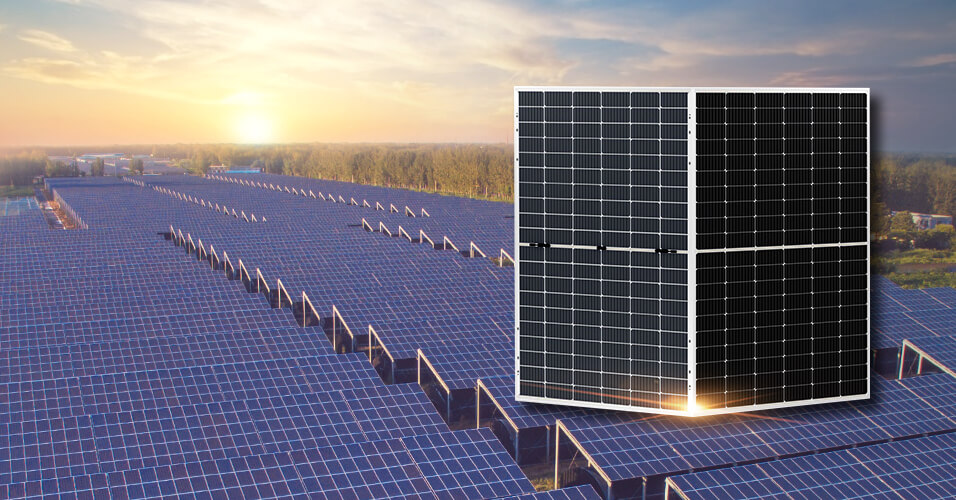The main difference between double-glass photovoltaic modules and single-sided glass solar panels lies in their construction and design, which can impact their durability, performance, and applications.
Double-Glass Photovoltaic Modules:
- Construction: Double-glass modules consist of two layers of glass sandwiching the solar cells and other components. The glass layers are sealed together, encapsulating the solar cells and protecting them from environmental factors.
- Durability: Double-glass modules are more robust and resistant to environmental stressors, such as moisture, UV radiation, and temperature fluctuations. The dual glass layers provide enhanced protection against physical damage, moisture ingress, and degradation over time.
- Transparency: The dual-glass design can lead to slightly reduced light transmission compared to single-sided glass panels. However, advancements in glass technology have mitigated this issue to some extent.
- Weight: Double-glass modules are generally heavier than single-sided glass panels due to the additional glass layer.
- Applications: Double-glass modules are well-suited for environments with harsh weather conditions, high humidity, or corrosive elements. They are often used in utility-scale installations, commercial projects, and applications where long-term durability is a priority.
- Aesthetics: Double-glass modules can offer a sleeker appearance due to the glass-on-glass design, which some people find more aesthetically pleasing.
- Cost: Double-glass modules tend to be more expensive to produce and install due to the added materials and manufacturing complexity.
Single-Sided Glass Solar Panels:
- Construction: Single-sided glass panels have a traditional design where the solar cells and other components are enclosed between a single layer of glass and a backing material.
- Durability: While still durable, single-sided glass panels may be slightly more vulnerable to environmental factors compared to double-glass modules.
- Transparency: Single-sided glass panels generally offer higher light transmission compared to double-glass modules due to the absence of an additional glass layer.
- Weight: Single-sided glass panels are lighter than double-glass modules, which can be advantageous for certain installation scenarios.
- Applications: Single-sided glass panels are commonly used in residential and smaller commercial installations where aesthetics and cost-effectiveness are important factors.
- Aesthetics: Some single-sided glass panels may have a frameless or sleek design that appeals to homeowners seeking an aesthetically pleasing appearance.
- Cost: Single-sided glass panels are often more cost-effective than double-glass modules due to their simpler construction and lower material requirements.
In summary, the choice between double-glass photovoltaic modules and single-sided glass solar panels depends on factors such as the intended application, environmental conditions, aesthetic preferences, and budget considerations. Double-glass modules offer enhanced durability and are suitable for challenging environments, while single-sided glass panels are commonly used in residential and smaller-scale installations.


